In SEO, making strategic decisions without empirical data is like relying on luck for consistent results.
But how can you effectively harness data to guide your SEO efforts and ensure you’re not just shooting in the dark?
This comprehensive guide will show you how to leverage data for confident, results-driven SEO strategies.
The Power Of Data-Driven SEO: A Case Study
Let’s start with a compelling example. Glassdoor.com, before its sale to Recruit Holdings in 2018, had an impressive 29,500,000 in monthly traffic – almost entirely organic.
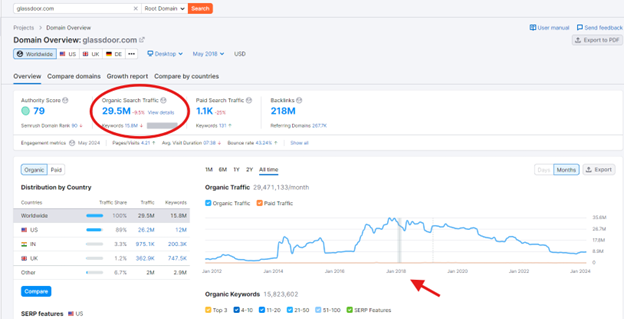 Screenshot from Semrush, September 2024
Screenshot from Semrush, September 2024Their success wasn’t by chance; it was the result of a meticulous, data-driven approach to SEO.
In her 2017 presentation at a marketing summit, Dawn Lyon, vice president of corporate affairs, shared how they weaved data from different internet sources.
 Image from Dawn Lyon/Glassdoor, September 2024
Image from Dawn Lyon/Glassdoor, September 2024Glassdoor’s strategy involved analyzing data from various internet sources to identify content gaps and create high-value, well-optimized content.
This approach led to over 200,000,000 backlinks from more than 200,000 websites, establishing their influence and authority in the online employment industry.
The takeaway? Glassdoor used data to identify valuable content assets and gaps, creating content that brought them closer to their prospects.
This data-driven strategy significantly influenced their rankings in search results for the online employment industry.
What Types Of Data Are Important In SEO?
Before diving into strategies, it’s crucial to understand the types of data that matter in SEO:
Each of these data types provides unique insights that can inform your SEO strategy.
The Importance Of Data In SEO
Data takes the guesswork out of SEO, allowing you to focus on what works based on empirical evidence. For instance:
- Keyword research data helps you understand your target audience’s pain points.
- Bounce rate data can help you address issues affecting user engagement.
- Engagement metrics show which content resonates with your audience.
How To Use Data In Your SEO Strategy
Now, let’s explore how to implement data-driven strategies in your SEO efforts:
1. Define Clear Objectives For SEO
Start by setting SMART (Specific, Measurable, Achievable, Relevant, Time-bound) SEO objectives. This helps you navigate the volume of available data and prioritize key areas for your campaigns.
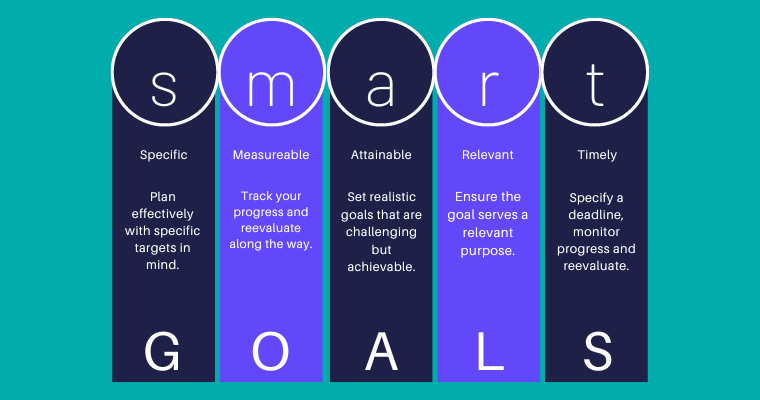 Screenshot taken by author, September 2024
Screenshot taken by author, September 20242. Establish Baseline Metrics And KPIs
Identify KPIs that align with your objectives and establish baseline metrics to measure current performance. This provides a reference point for evaluating the impact of your SEO strategy.
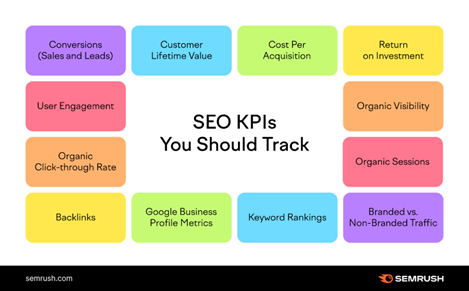 Screenshot from Semrush, September 2024
Screenshot from Semrush, September 20243. Understand User Intent
Analyze search intent behind keywords to effectively optimize your content. Use tools like Google Search Console to track click-through rates (CTR) for individual pages, which can indicate how well your content matches user intent.
4. Choose High-Opportunity Keywords
Identify “low-hanging fruit” keywords with significant search volume and low to moderate competition. Evaluate their business potential before targeting them.
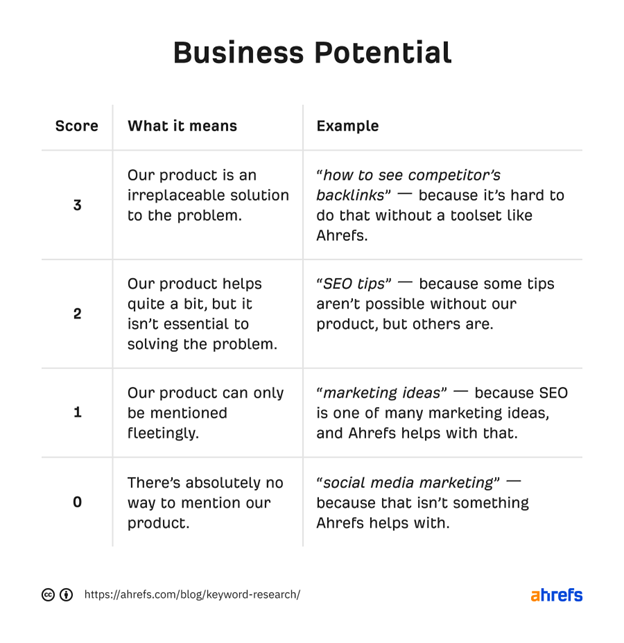 Screenshot from Ahrefs, September 2024
Screenshot from Ahrefs, September 20245. Gather And Analyze Your Website Data
Use tools like Google Analytics to track your website traffic and user engagement metrics. This data can provide insights into your search performance and help you identify areas for improvement.
6. Conduct Competitor Analysis
Identify your SEO competitors and analyze their strategies. Tools like Semrush can help you find keyword gaps and backlink opportunities.
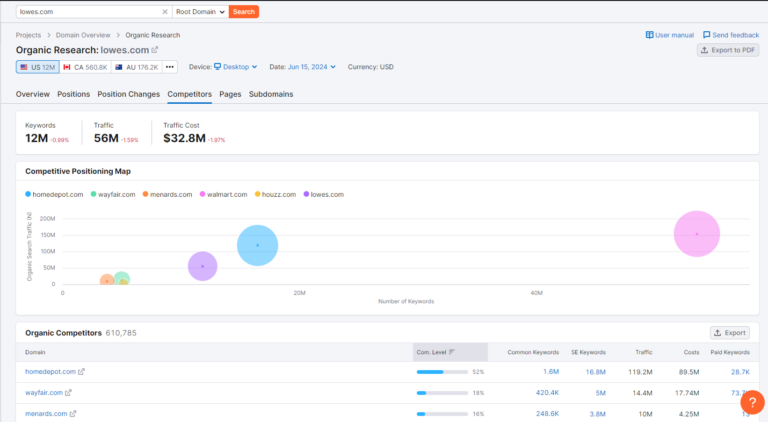 Screenshot from Semrush, September 2024
Screenshot from Semrush, September 20247. Create A Data-Driven SEO Strategy
Based on your gathered data, create an informed SEO strategy. This should include:
- Creating your ideal customer profile.
- Targeting the right keywords.
- Conducting a site-wide audit.
- Creating a content calendar.
8. Double-Down On High-Performing Keyword Categories
Identify which keywords drive the most organic traffic and conversions on your site. Use Google Search Console to see which terms rank highest and attract the most click-throughs from search results.
If you use a rank-tracking tool, combine this data with Google Analytics to see how pages perform in terms of traffic, engagement, and conversions.
Once you’ve identified your best-performing keywords, expand your content footprint within these high-value areas.
For example, if “beginner yoga poses” is a top performer, consider developing content for related terms like “yoga poses for flexibility,” “yoga routines for beginners,” and “best yoga mats for beginners.”
These “content clusters” around a topic will help you capture more traffic from thematically related keywords and can increase your domain’s overall authority for that topic area.
9. Analyze What Makes Your Best Content Effective
Examine your highest-performing content to identify factors that make it engaging for users. Consider aspects like:
- Word count: Is longer content performing better, or do users prefer concise information?
- Tone of voice: Is a casual, conversational tone more effective, or do users respond better to a formal, authoritative voice?
- Presentation: How does the use of headings, bullet points, images, and other visual elements impact engagement?
- Originality: Are unique insights or original research driving more engagement?
- Expertise demonstrated: How does the level of experience, expertise, authoritativeness, and trustworthiness (E-E-A-T) impact performance?
- Call-to-action (CTA): Analyze the clarity and appeal of your CTAs. Are they driving the desired user actions?
Understanding which of these variables plays a part will guide you in crafting future content that might mirror the same success.
10. Eliminate Friction From Your Conversion Paths
Analyze which user journeys lead to the highest levels of conversions. Look for commonalities in these high-converting paths and aim to replicate these elements across your site.
11. Prioritize Core Web Vitals
Use Google’s PageSpeed Insights to evaluate your site’s performance across Core Web Vitals metrics. Implement recommended fixes to improve your site’s user experience.
12. Enhance Your Site’s Mobile Usability
With mobile accounting for about 63% of organic search traffic in the U.S., optimizing for mobile users is crucial. Use Google’s Lighthouse tool to test your site’s mobile-friendliness and implement necessary improvements.
13. Analyze Backlinks For More Targeted Outreach
Study your site’s backlink data to optimize your link-building strategy. Use this information to tailor your outreach strategy and target high-authority websites that are likely to find your content valuable.
14. Collaborate With Cross-Functional Teams
Communicate the value of SEO to all stakeholders and align it with broader business goals. Integrate feedback from various teams to improve your SEO workflow efficiency.
15. Monitor And Iterate
Remember, SEO isn’t a set-it-and-forget-it strategy. Continuously monitor your progress and be prepared to iterate based on new data and insights.
Tools To Find SEO Data
To implement these strategies effectively, you’ll need the right tools. Here are some essential ones:
- Google Analytics: For traffic data and user behavior insights. GA4 provides detailed information about your website visitors, including their demographics, interests, and how they interact with your site.
- Google Search Console: For keyword research and onsite data. Google Search Console shows you how your site appears in Google search results and can help you identify and fix indexing problems.
- Ahrefs: For backlink data and competitor analysis. It offers comprehensive insights into your backlink profile and helps you identify link-building opportunities.
- Semrush: For comprehensive competitor data and keyword research. It’s particularly useful for understanding your competitors’ strategies and finding keyword gaps.
- Screaming Frog SEO Spider: For technical SEO data. This tool crawls your website to identify technical issues that could be impacting your search engine performance.
- PageSpeed Insights: For Core Web Vitals analysis. It provides both lab and field data about page performance, with suggestions for improvement.
- Lighthouse: For mobile usability testing. This open-source tool audits performance, accessibility, progressive web apps, and more.
Remember, while these tools provide valuable data, the real power lies in how you interpret and act on this information.
Regularly review your data, look for trends and patterns, and use these insights to continuously refine your SEO strategy.
Leverage Data For Decision Making
Success in SEO isn’t luck or magic. With the right data, you can make informed strategies that cut through the noise and achieve better results on the search engine results pages (SERPs).
Remember, SEO is not just about theory – it’s about implementation. The final step of your data-driven decisions is to put your strategies into action and benchmark against your previous performance.
By leveraging data as a foundation for decision-making, you can create more effective SEO strategies.
From capitalizing on high-performing keywords to enhancing mobile usability and optimizing backlink strategies, each data-driven action you take helps solidify your online presence and improve your rankings.
Stay analytical, stay informed, and let the data illuminate your path to SEO success.
More resources:
Featured Image: Deemerwha studio/Shutterstock
